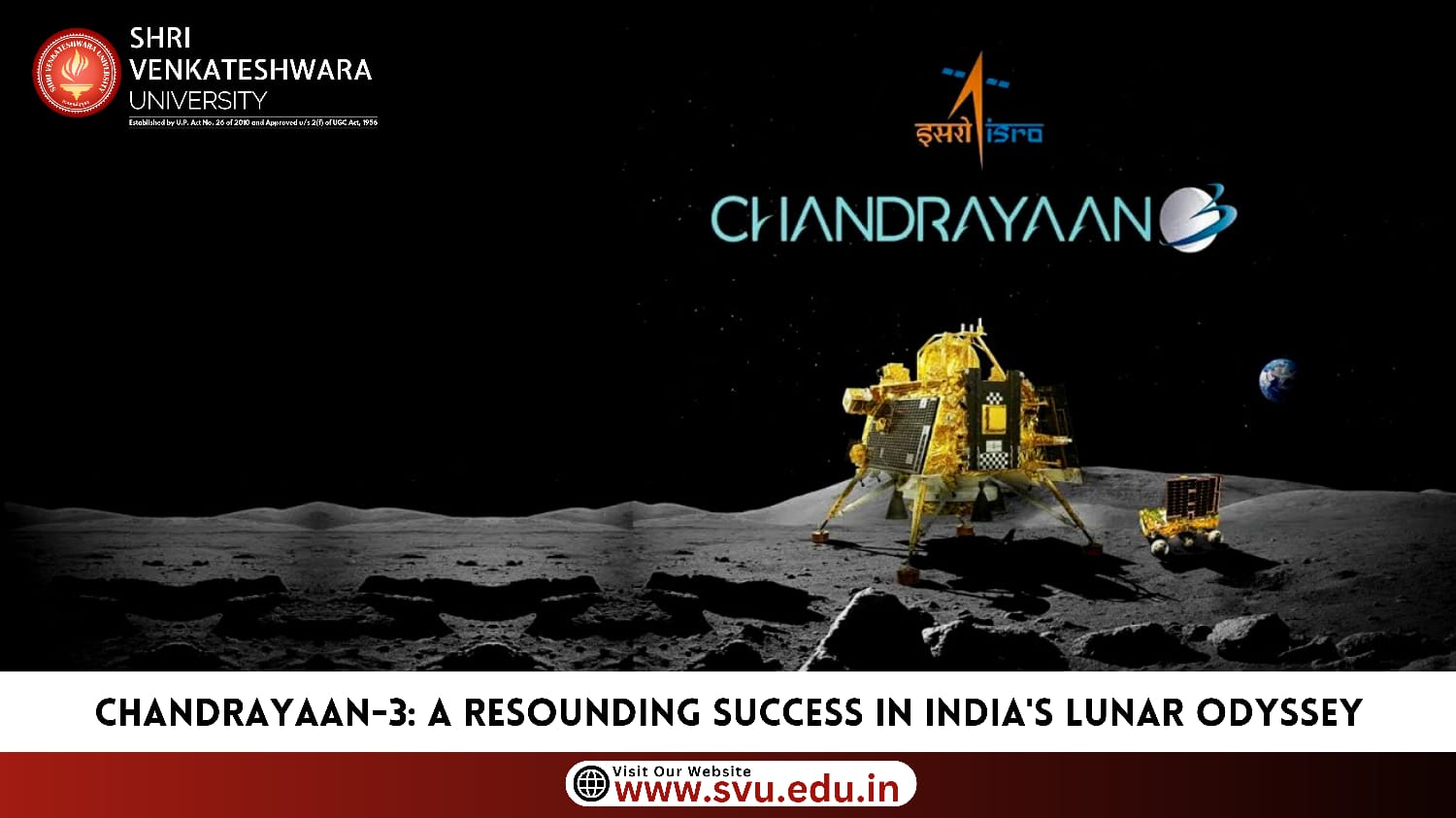
India's journey in space exploration has been nothing short of remarkable, and the nation has made significant strides in a relatively short span of time. From launching its first satellite, Aryabhata, in 1975 to embarking on complex interplanetary missions like Chandrayaan and Mangalyaan, India has firmly established itself as a major player in the global space community. In this blog, we will take you on a journey through India's inspiring space missions (Chandrayaan-3) and the impact they have had on science, technology, and national pride.
India's Chandrayaan program has been at the forefront of lunar exploration, and Chandrayaan-3 represents the country's continued commitment to unravel the mysteries of the Moon. Chandrayaan-3 has made remarkable strides in lunar exploration and scientific discovery. Chandrayaan-3 was launched after the unforeseen loss of Chandrayaan-2's Vikram lander during its attempted soft landing on the Moon's south pole. The Indian Space Research Organization (ISRO) swiftly bounced back by initiating the Chandrayaan-3 mission. This determination to learn from past setbacks and push forward is a testament to the resilience and expertise of India's space scientists.
Cost-Effective Approach: One of the standout features of Chandrayaan-3 is its cost-effectiveness. The mission managed to achieve its objectives while keeping the expenses in check. By reusing certain components and optimizing resources, ISRO demonstrated its capability to achieve more with less. This frugal approach has become a hallmark of India's space missions and has garnered international recognition.
Landing Success: Chandrayaan-3's primary goal was to succeed where its predecessor had faltered: a successful soft landing on the Moon. The mission used a modified version of the Vikram lander, which had been improved based on lessons learned from the Chandrayaan-2 experience. The result was a flawless landing, marking a significant achievement for ISRO and a cause for celebration in India and beyond.
Scientific Payload: Chandrayaan-3 carried a comprehensive scientific payload, including instruments designed to study the lunar surface, composition, and geology. The data collected has provided valuable insights into the Moon's history, its resource potential, and its suitability for future lunar exploration and colonization. This data has already led to groundbreaking discoveries, furthering our understanding of the Moon's significance in planetary science.
International Collaboration: Chandrayaan-3, like its predecessors, maintained a spirit of international collaboration. It not only strengthened India's position in the global space community but also fostered cooperation in lunar exploration. This cooperative approach allowed Chandrayaan-3 to share its findings with other countries and leverage expertise from around the world, ultimately advancing the cause of space exploration for all of humanity.
National Pride: Chandrayaan-3's success has bolstered national pride in India. The achievement of a successful lunar landing after the setback of Chandrayaan-2's Vikram lander is a testament to India's resilience and determination. It has been a source of immense pride and has rallied the nation around a common goal. The mission has inspired the younger generation of Indians to pursue careers in science and space technology. It serves as a symbol of what can be accomplished through dedication and hard work, irrespective of challenges faced along the way.
Inspiration for Future Generations: Chandrayaan-3's success has had a profound impact on India's youth and budding scientists. It serves as an inspiration, igniting the imagination of countless young minds and encouraging them to pursue careers in science and space technology. The mission's success has become a symbol of India's capabilities in the space arena and a source of national pride.
Conclusion: Chandrayaan-3 represents a remarkable achievement in India's lunar exploration journey. It showcases the country's ability to overcome challenges and emerge stronger, while also contributing to our understanding of the Moon's mysteries. The mission's cost-effectiveness, successful soft landing, and valuable scientific data have been widely celebrated, making Chandrayaan-3 a resounding success not only for India but for the entire global space community. As we look ahead, the lessons learned and the achievements of Chandrayaan-3 will undoubtedly serve as a foundation for future lunar missions, ensuring that India continues to play a pivotal role in the exploration of the cosmos.